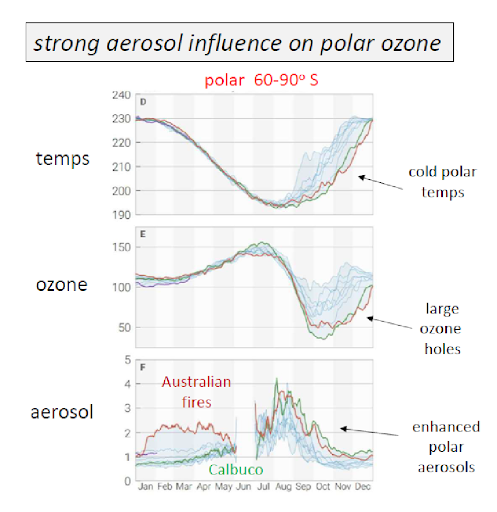Stratospheric ozone and temperature effects of the 2020 Australian New Years fires
The 2020 Australian forest fires injected a record amount of smoke into the lower stratosphere, covering much of the Southern Hemisphere (SH) during 2020. The stratospheric aerosol loading was similar in mass to recent moderately sized volcanic eruptions, including the SH Calbuco eruption in 2015. Black carbon present in biomass burning plumes strongly absorbs incoming solar radiation, leading to self-lofting and heating of the lower stratosphere. Satellite observations show warm temperature anomalies and moderate ozone loss over SH midlatitudes during 2020, possibly from chemical effects of the aerosols. In addition, the smoke aerosols reached the polar lower stratosphere and entered the Antarctic winter polar vortex. Antarctic ozone depletion in 2020 reached a decadal low for both magnitude and persistence during November-December, possibly linked with the enhanced aerosols. The low ozone amounts led to record low springtime polar temperatures and a strong and persistent polar vortex. Overall, the polar ozone depletion, temperature, and polar vortex evolution broadly resembled the effects following the Calbuco eruption in 2015.

Reference:
Rieger, L. A., Randel, W. J., Bourassa, A.E., & Solomon, S. (2021). Stratospheric temperature and ozone anomalies associated with the 2020 Australian New Year fires. Geophysical Research Letters, 48, e2021GL095898. https://doi.org/10.1029/2021GL095898